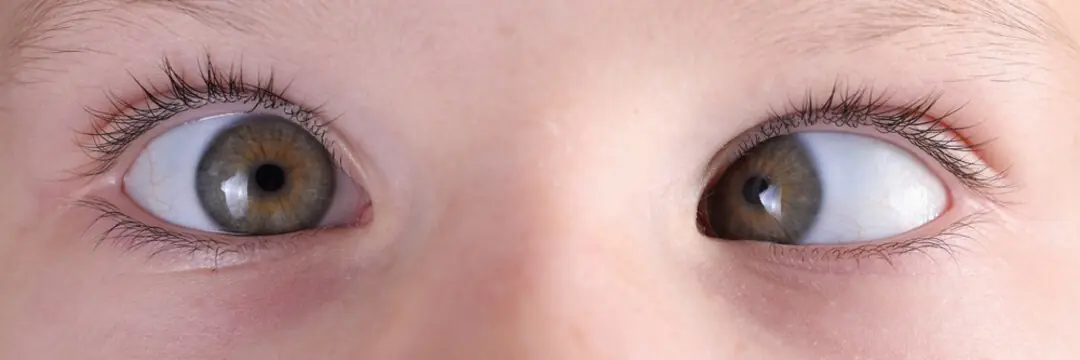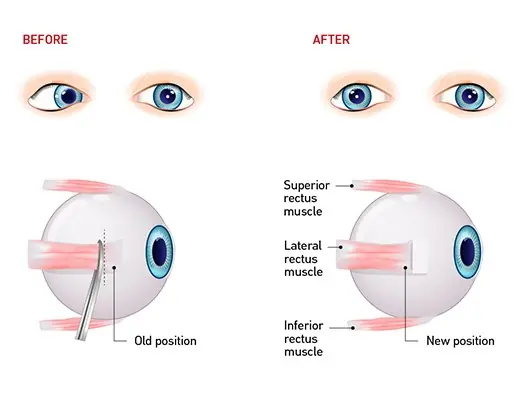What is Squint?
Squint or Strabismus is a deviation of eyes (one or both). It is more common in children, but can be seen in adults as well. The eye may be deviated inwards (Esotropia) or outwards (exotropia). There can also be vertical deviation, in which one eye is higher than the other.

What are the symptoms of Squint?
Squint is usually noticed by the patient or their parents/relatives. It may increase with time. If the squint has recently started, then the patient may have double vision (diplopia). If the squint is present since early childhood or it is large deviation, it can lead to poor vision in one or both eyes (Lazy eye or Amblyopia).
What are the causes of Squint?
Squint can be present at birth or may appear later in life. It is usually due to imbalance in power of the eyes or imbalance between the muscles of the eyes. If it presents suddenly in adulthood, it is most likely associated with damage to the nerves supplying the muscles of the eye due to diabetes, stroke, high blood pressure, or trauma.
What are the tests for Squint?
Main evaluation of Squint is done by a thorough clinical examination. This includes vision with and without glasses, pupil reaction, eye movements and other tests if they seem necessary. May include dilated retinal examination.
What is the treatment for Squint?
Treatment for squint may include glasses, exercises for eye muscles and surgical correction. This treatment will be decided by your treating doctor as per suitability and may include one or more of these.

